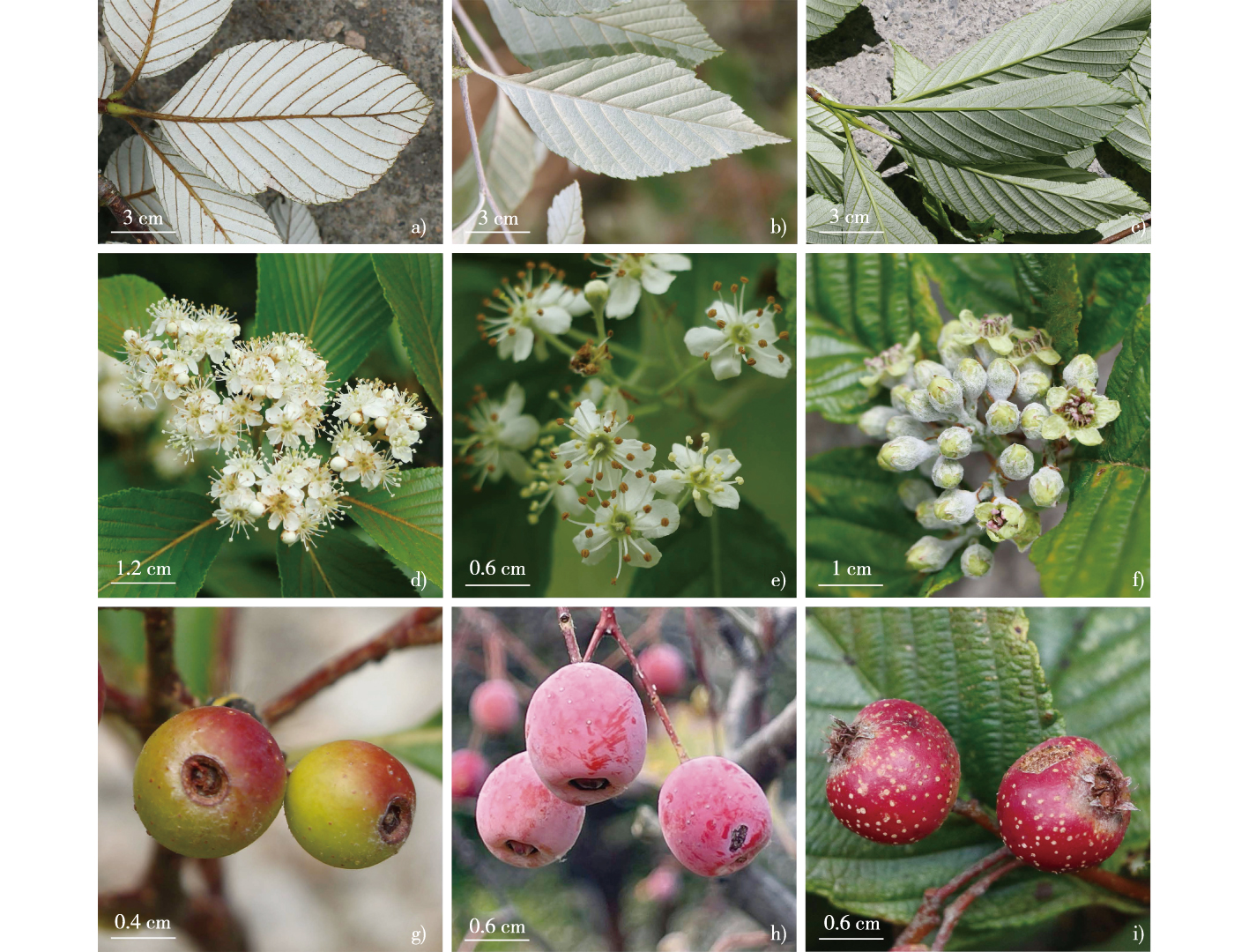 PDF(11845 KB)
PDF(11845 KB)


Phylogenetic analysis of Sorbus ser. Folgnerianae (Rosaceae)
MA Jianhui, CHEN Xin, GENG Liyang, TANG Chenqian, WEI Xueyan
Journal of Nanjing Forestry University (Natural Sciences Edition) ›› 2024, Vol. 48 ›› Issue (4) : 25-36.
 PDF(11845 KB)
PDF(11845 KB)
 PDF(11845 KB)
PDF(11845 KB)
Phylogenetic analysis of Sorbus ser. Folgnerianae (Rosaceae)
【Objective】To test whether Sorbus ser. Folgnerianae is a monophyletic group and to reconstruct the phylogenetic relationship among three species, S. dunnii, S. folgneri and S. hemsleyi.【Method】Morphological characteristics of leaves, flowers and fruits of Ser. Folgnerianae species were compared through specimen examination and field observation. Phylogenetic relationships within Ser. Folgnerianae were analyzed based on the comparison of the plastid genomes, repeat sequences, sequence variations of the five plastid genomes newly sequenced including three Ser. Folgnerianae species and S. megalocarpa from Sect. Aria, together with other plastid genomes available in this genus, using representatives of related genera in Rosaceae and Barbeya oleoides (Barbeyaceae) as the outgroups.【Result】Species of Ser. Folgnerianae can be easily distinguished from each other in the number of styles, color of anthers, fruit morphology and the persistence of calyx. Plastid genomes of five samples have a similar structure, gene content and organization. This sizes of plastid genomes range from 159 898 to 160 755 bp, with the GC contain range between 36.4% and 36.6%. All plastid genomes contain 113 unique genes (79 protein-coding genes, 30 tRNA genes and four ribosomal RNA genes). The IR region has two pseudogenes, rps19Ψand ycf1Ψ, with different extension lengths. 48-54 simple sequence repeats (SSRs), 36-49 long repeats sequences (LRSs) and 20 highly variable regions in the noncoding regions are identified as the most promising potentially variable makers for population genetics, species delimitation and phylogenetic studies. Phylogenetic analyses under ML/BI indicated that Sorbus is polyphyletic and the six sections within it are all monophyletic. Although, three sampled species of Ser. Folgnerianae are clustered in one group, S. Alnifolia of Ser. Alnifolia is more closely related to S. dunnii and S. folgneri than S. hemsleyi.【Conclusion】Sorbus ser. Folgnerianae is not monophyletic. Morphological characteristics and plastid genome analysis are effective in understanding the phylogenetic relationship in Ser. Folgnerianae.

| [1] |
俞德浚, 陆玲娣. 绣线菊属, 牛筋条属, 栒子属, 花楸属, 木瓜海棠属中国植物志第36卷[M]. 北京: 科学出版社, 1974:283-344.
|
| [2] |
|
| [3] |
|
| [4] |
|
| [5] |
|
| [6] |
|
| [7] |
|
| [8] |
|
| [9] |
|
| [10] |
俞德浚, 关克俭. 中国蔷薇科植物分类之研究(一)[J]. 植物分类学报, 1963, 8(3):202-234.
|
| [11] |
|
| [12] |
|
| [13] |
|
| [14] |
|
| [15] |
|
| [16] |
|
| [17] |
|
| [18] |
汤晨茜, 仇志欣, 檀超, 等. 陕甘花楸叶绿体基因组及其与爪瓣花楸的系统关系[J]. 园艺学报, 2022, 49(3):641-654.
|
| [19] |
|
| [20] |
|
| [21] |
|
| [22] |
|
| [23] |
|
| [24] |
|
| [25] |
|
| [26] |
|
| [27] |
|
| [28] |
|
| [29] |
|
| [30] |
|
| [31] |
|
| [32] |
|
| [33] |
|
| [34] |
|
| [35] |
|
| [36] |
李倩, 郭其强, 高超, 等. 贵州威宁红花油茶的叶绿体基因组特征分析[J]. 园艺学报, 2020, 47(4):779-787.
|
| [37] |
赵儒楠, 褚晓洁, 刘维, 等. 鹅耳枥属树种叶绿体基因组结构及变异分析[J]. 南京林业大学学报(自然科学版), 2021, 45(2):25-34.
|
| [38] |
|
| [39] |
|
| [40] |
|
| [41] |
|
| [42] |
|
| [43] |
|
| [44] |
|
| [45] |
|
| [46] |
|
/
| 〈 |
|
〉 |